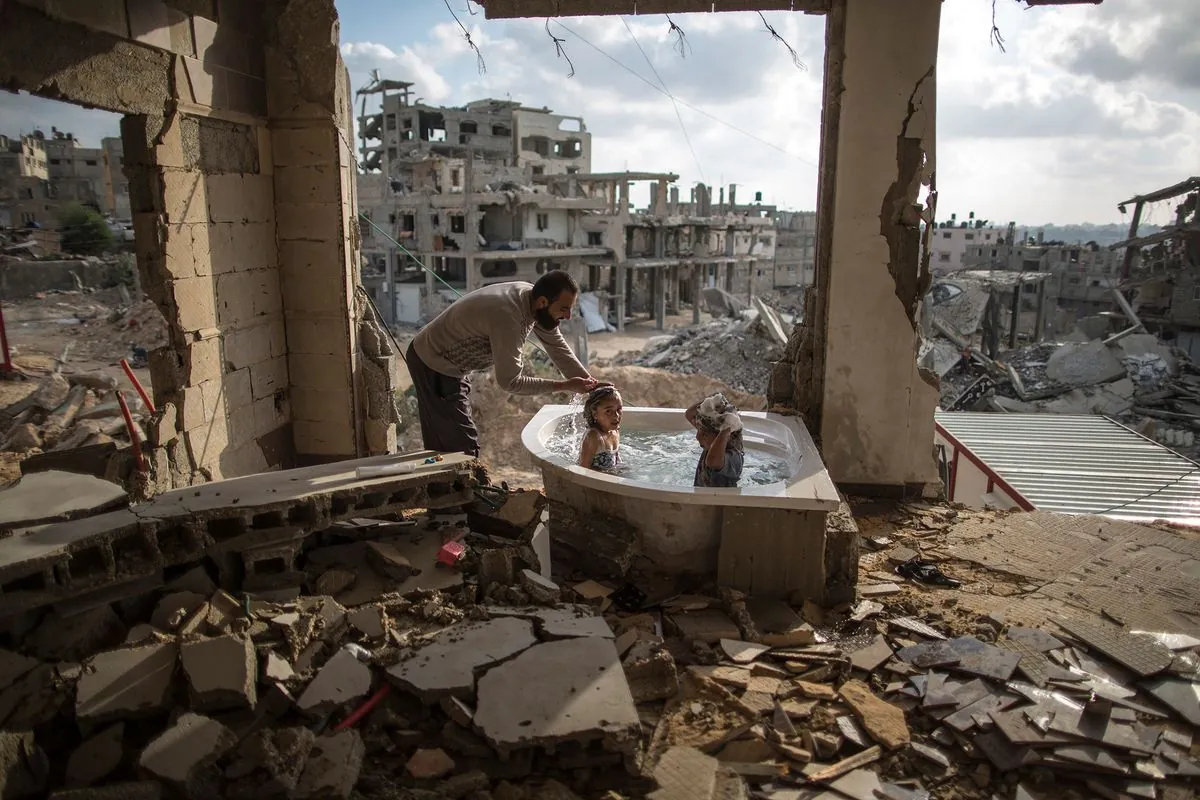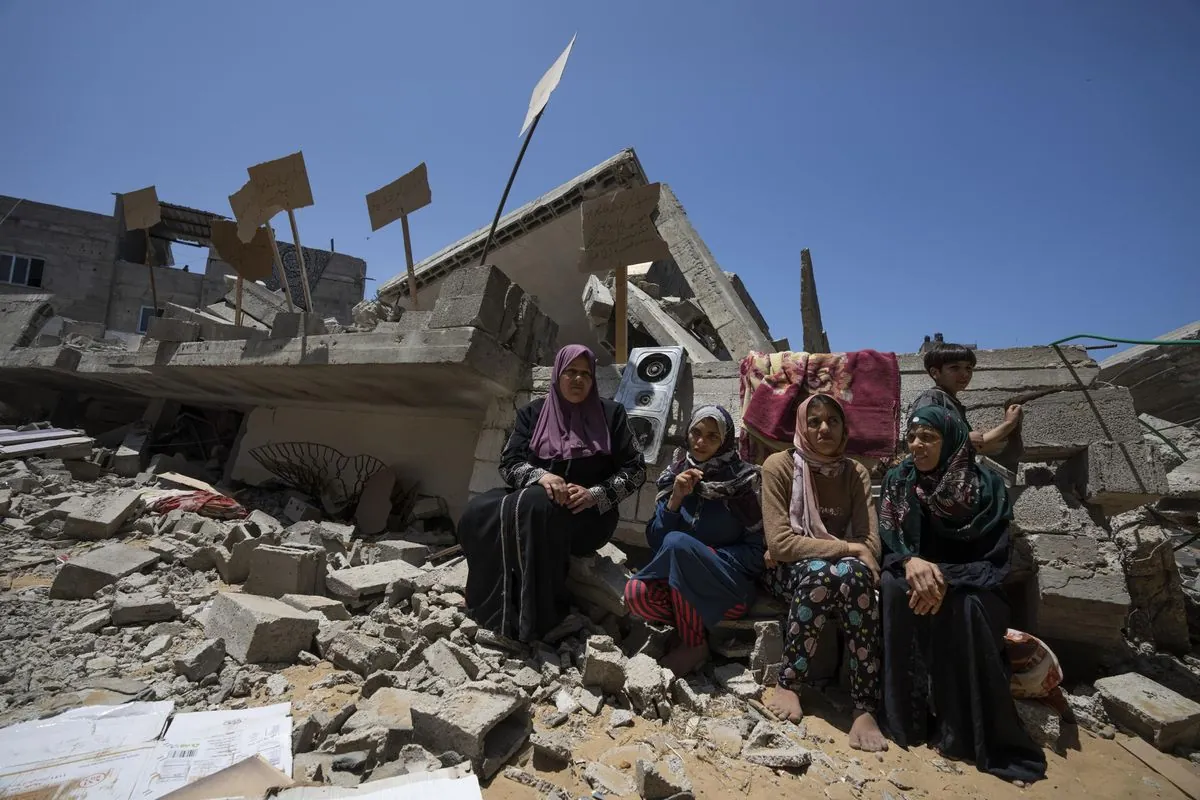Gaza Family Returns to Rubble: A Tale of Resilience Amid Conflict
In war-torn Gaza, the Al-Kahlout family chooses to live in their destroyed home, facing challenges of safety and scarcity. Their story reflects the broader struggle of displaced Palestinians in the ongoing conflict.

In the heart of Beit Lahia, Gaza Strip, the Al-Kahlout family has made a poignant decision to return to their shattered home, a stark reminder of the ongoing conflict's devastating impact. This choice reflects the broader struggle faced by countless Palestinians in one of the world's most densely populated areas, where over 2 million people inhabit a mere 365 square kilometers.
The five-story building that once stood as a testament to the Al-Kahlouts' dreams now lies in ruins, reduced to pulverized cement and scattered furniture. Umm Nael and her husband Ismail Ahmed Al-Kahlout find themselves living among the remnants of their past, their current shelter a makeshift arrangement of tarpaulins and cloths supported by metal poles.

The family's return to their destroyed home is not a choice made lightly. With over 90% of Gaza's population displaced, often multiple times, safe shelter has become increasingly scarce. Umm Nael explains their decision, citing overcrowded schools and the constant threat of bombings as reasons for preferring their ruined home.
"I can't find shelter in schools, schools are crowded and they keep bombing them, so we preferred to live here."
The ongoing conflict has exacerbated Gaza's pre-existing challenges. Even before the current crisis, the region faced a staggering 45% unemployment rate and struggled with limited access to clean water, with over 95% of Gaza's water supply deemed undrinkable. The recent escalation has only deepened these issues, with more than 60% of residential buildings and 80% of commercial facilities destroyed, according to a January 2024 World Bank report.
Amidst the destruction, the Al-Kahlout family grapples with the loss of their son, killed in the conflict that has claimed over 40,000 lives and injured more than 92,000, according to Gaza authorities. The memories of their lost child linger in the ruins of their home, a painful reminder of the human cost of war.
"The memories with our son who was martyred are in it (the house). We put our whole life's work in it, as well as our life's years, memories, dreams and our lives."
As the family struggles to maintain a semblance of normalcy, they face daily challenges of hunger and disease. The scarcity of basic necessities is evident in Umm Nael's words as she describes the longing for simple foods like meat, chicken, and even a piece of onion.
Despite the adversity, Gaza's resilience shines through. The region boasts a literacy rate of over 96%, one of the highest in the Arab world, and more than half of its population is under 18, representing a young generation full of potential. However, this potential is continually threatened by the ongoing conflict and restrictions, including limited access to farmland and fishing waters due to Israeli security measures.
As the Al-Kahlout family waters plants in what remains of their bath, their story serves as a powerful testament to the human spirit's resilience in the face of unimaginable hardship. It also underscores the urgent need for a lasting resolution to the conflict and substantial humanitarian aid to address the critical needs of Gaza's population.


































